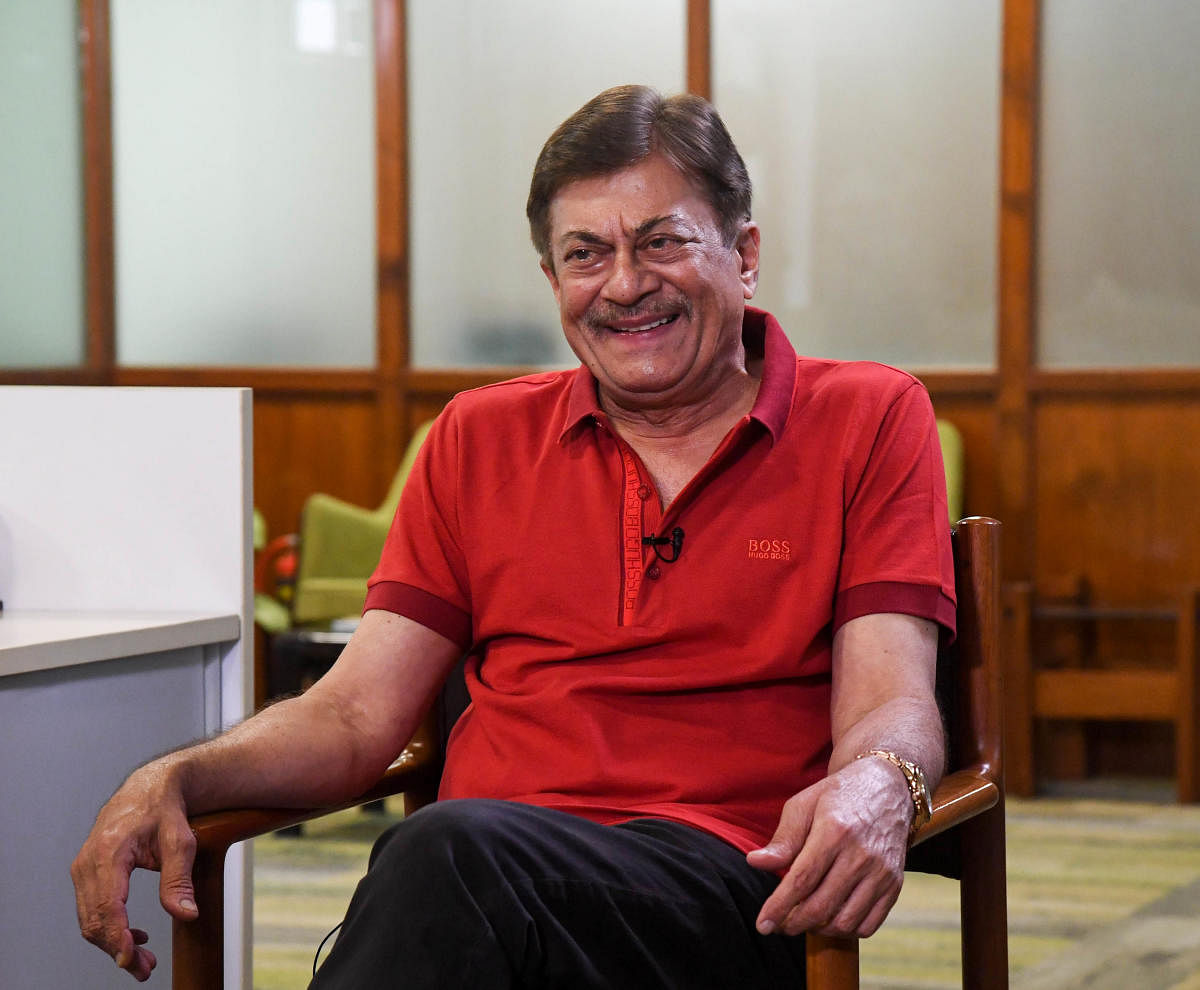

In the Kannada classic ‘Mungaru Male’ (2006), Anant Nag’s character Major Subbaiah fondly calls the protagonist (Ganesh) ‘young man’. In reality, age is irrelevant for Anant Nag as he can put many younger actors to shame with his fitness, style and enthusiasm.
“Even before I became an actor, I was disciplined and conscious about physical fitness,” he tells Showtime, reminiscing about his childhood, which was divided between Anand Ashram at Puttur in Dakshina Kannada and Chitrapur Math at Shirali in Uttara Kannada.
“When I joined college in Mumbai, NCC training was compulsory for two years. That drove me to be fit and it helped me in theatre, later,” he says.
It is his humility that makes Anant Nag call himself an ‘accidental actor’. Indian cinema will forever be grateful for his chance meeting with the stalwarts of Mumbai theatre in the 1970s. His solid stage career, with the likes of Satyadev Dubey, Amol Palekar and RD Kamath, established the foundation for his journey in films.
“I acted in 50 plays in five years. I got many interesting roles in Konkani, Marathi, Kannada and Hindi theatre,” he recollects proudly.
In films, it is not easy to box Anant Nag in one category of acting. He can impress you with his effortlessness in any role.
“When I got to see a lot of English films early into my career, I liked their realistic acting. I tried to introduce it in my style. The naturality, especially of the older generation like Peter O’ Toole, Richard Burton and Marlon Brando, left a big impact on me,” he says.
Anant Nag’s filmography shows he is one of the few commercial cinema veterans to have worked with art-house giants like Shyam Benegal and MS Sathyu. He developed an understanding of cinema as these directors reflected on society through their works.
“For these directors, cinema wasn’t a medium just for entertainment. They tried to educate and enlighten. Through films, they commented on what was happening around them,” he says.
Anant Nag catered to all audiences through his choice of good roles. In ‘Bayalu Daari’ (1976), he acted with the template of a commercial cinema hero. In ‘Naa Ninna Bidalaare’ (1979), he succeeded in the horror genre. His good looks were perfect for the love story in ‘Chandanada Gombe’ (1979). Soon, Anant Nag extended his range by playing a dual role in 'Narada Vijaya' (1980).
“I used to consciously select subjects. I would look for variety. Moreover, I wanted to be an actor and not a star. I always told people not to put my posters outside movie halls,” he explains.
No discussion of Anant Nag is complete without the mention of his comedy hits. He created magic in 'Ganeshana Maduve' (1990) and the film set off a chain of riotous sequels like 'Gowri Ganesha' (1990), 'Undu Hoda Kondu Hoda' (1991) and 'Yarigu Helbedi' (1994). These are films watched over and over again by families till date.
“I was successful in romantic roles and then came Phani Ramachandra who cast me in 'Ganeshana Maduve'. With that film, I falsified the notion that there should be a separate comedian in a movie. I thank director RD Kamath for introducing me to humour in my theatre days. He taught me the nuances of natural comedy and slapstick,” he says.
In Karnataka, there is strong nostalgia for his brother Shankar. People fondly remember his works even two decades after his untimely death in an accident. The Nag brothers’ films like ‘Minchina Ota’ (1979), Accident (1985) and Nodi Swamy Navirodu Heege (1985) were considered ahead of their times and have attained cult status today.
Anant Nag calls the timeless television series ‘Malgudi Days’ as one of Shankar’s finest achievements. “He did serious theatre in Mumbai before finding his calling in commercial films. But when he got an opportunity to do ‘Malgudi Days’, he went ahead and did it. He proved his calibre with it. People remember him for that. That’s what took him to the hearts of people from all over India,” he says.
Emerging directors are excited to work with him. Anant Nag’s hunger to match their vision has resulted in some excellent new generation Kannada films. He observes the styles of the new brigade and adapts to them. “Hemanth (Rao) is intense while Rishab (Shetty) does lighter films. Then there is Yogaraj (Bhat) who balances entertainment and subject,” he observes.
The manner in which he has stayed relevant throughout his career makes him an all-time favourite in Kannada cinema. “So many times, young children have told me they like me. And then they say their parents and grandparents are also my fans,” he says, chuckling.
Truly, an actor for all ages!